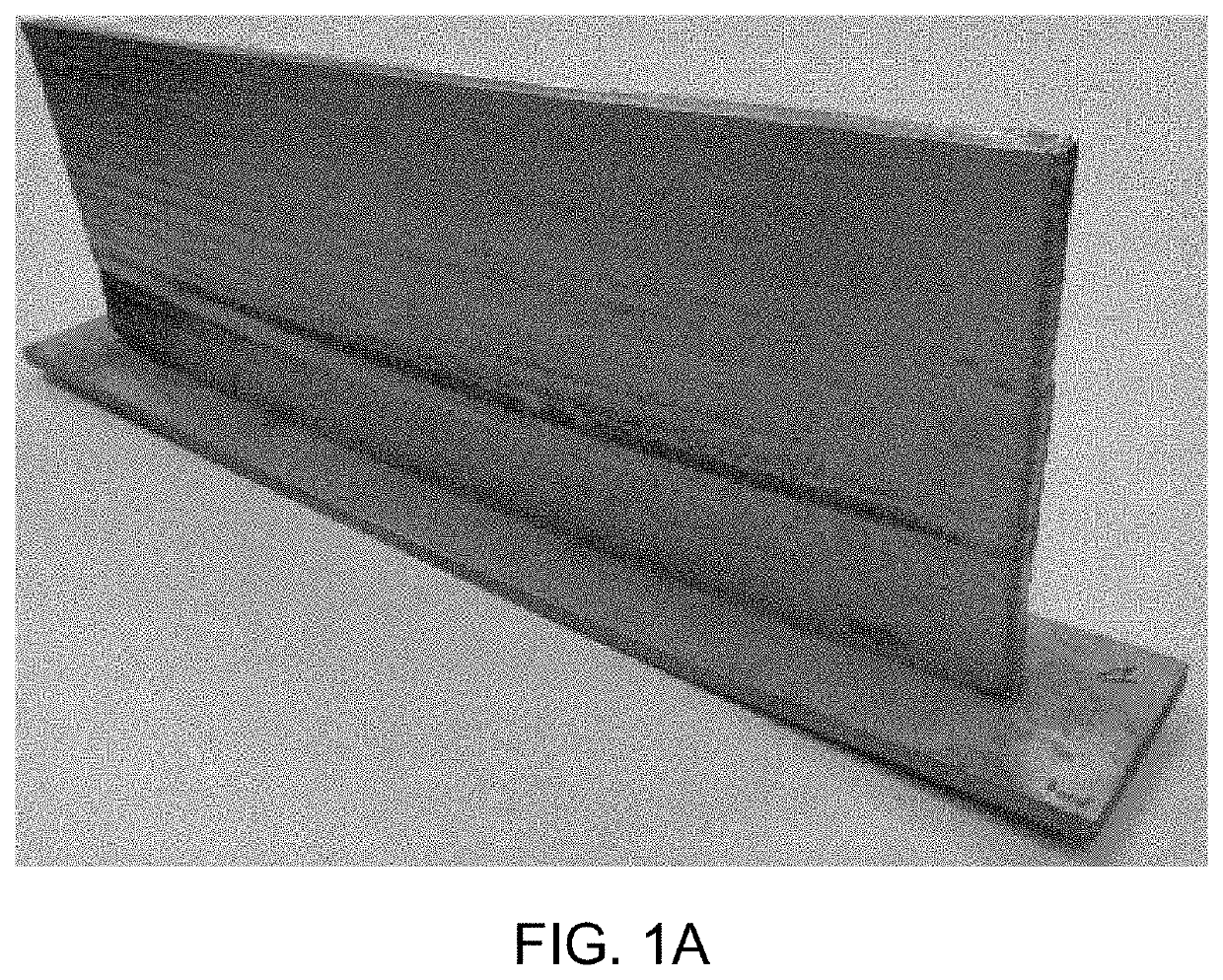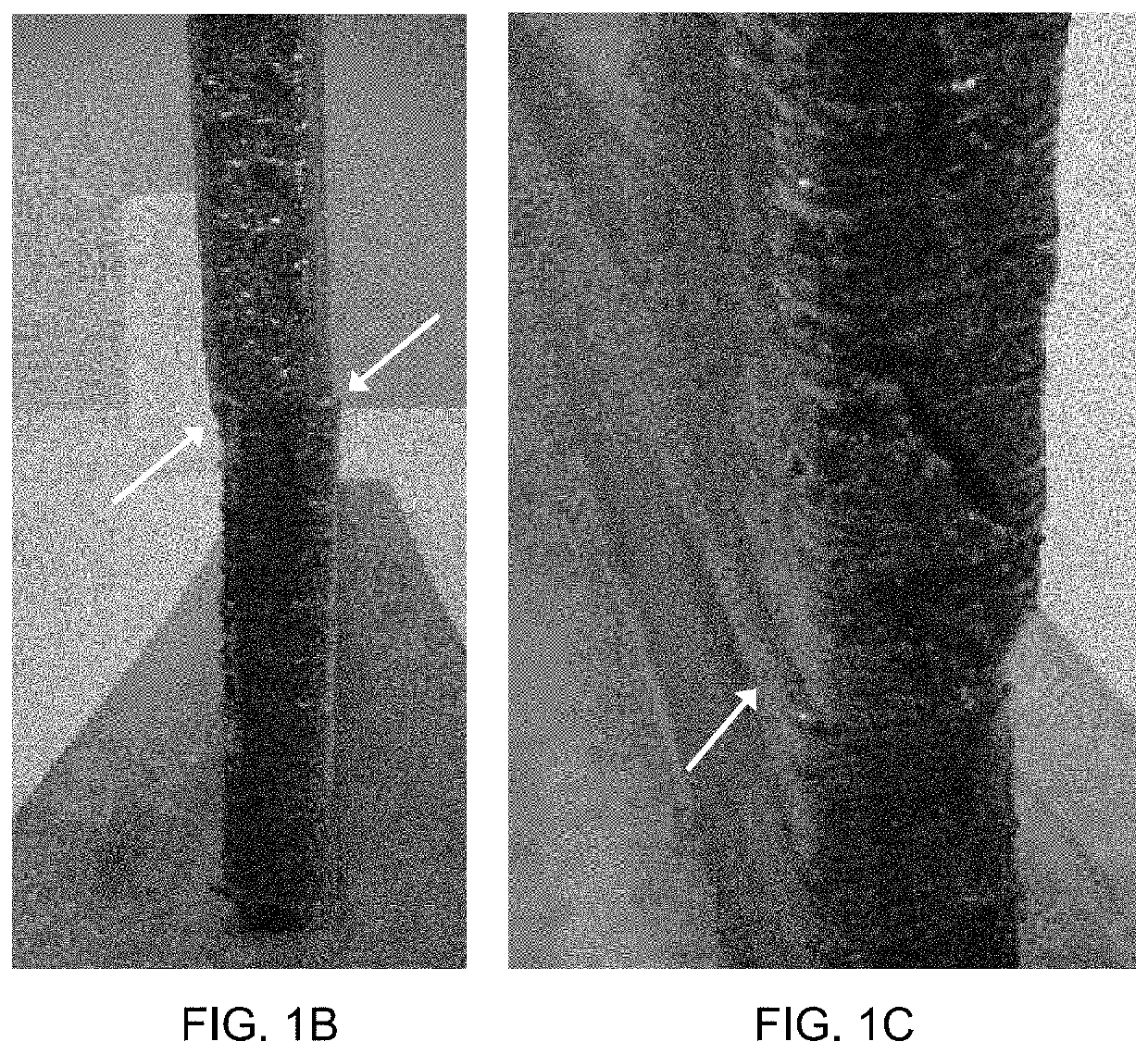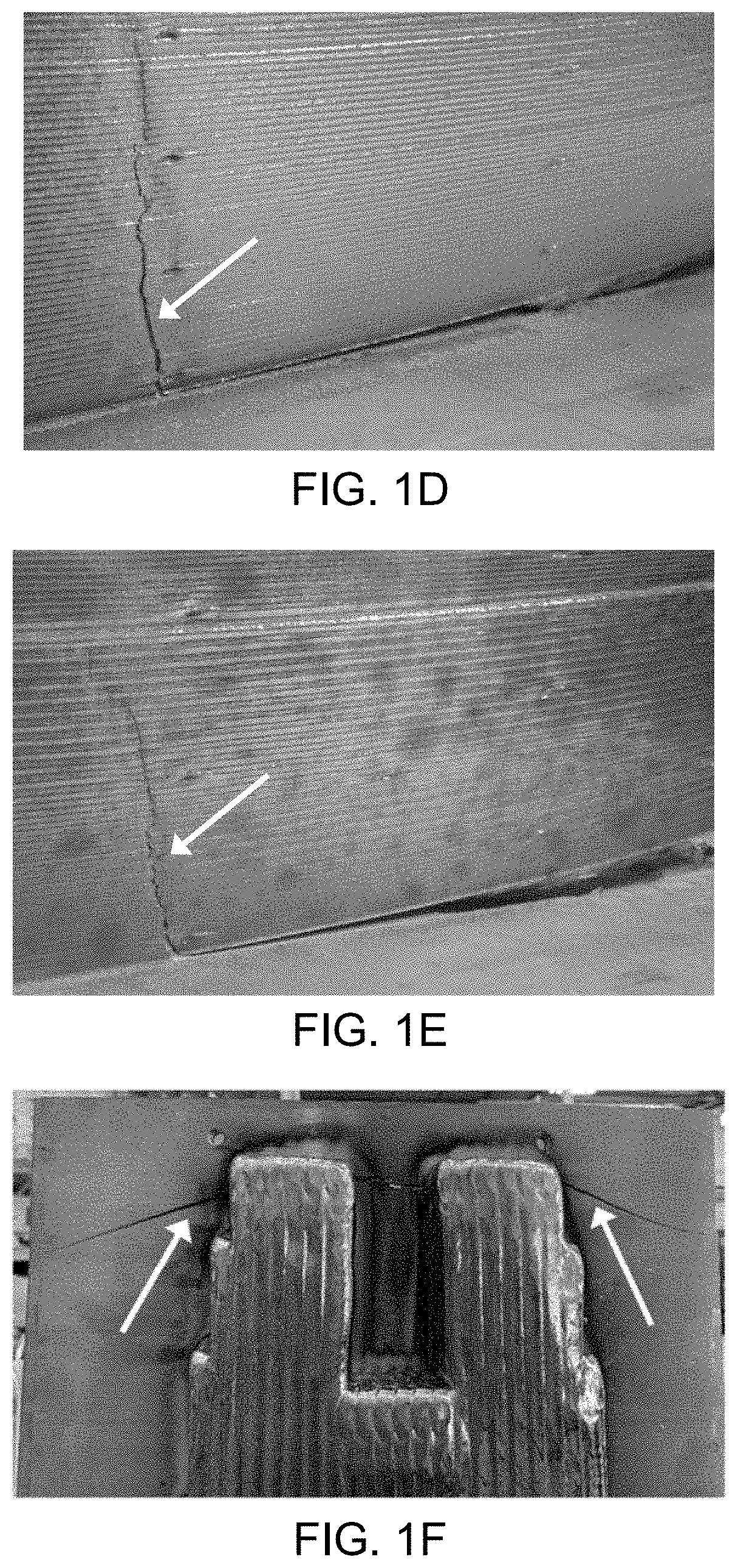Distortion mitigation in directed energy deposition
a technology of directed energy deposition and distortion mitigation, which is applied in the direction of manufacturing tools, soldering devices, auxillary welding devices, etc., can solve the problems of high material waste of expensive titanium metal that is often machined away, large lead time associated with the fabrication of metal parts, and inevitable build-up of complex thermally induced residual stress and distortion during layer upon layer fabrication. , to reduce or minimize residual stress or distortion, the effect of improving material quality
- Summary
- Abstract
- Description
- Claims
- Application Information
AI Technical Summary
Benefits of technology
Problems solved by technology
Method used
Image
Examples
example 1
[0213]A first base plate substrate having dimensions (L×W×T) of 635 mm×190 mm×9.5 mm and made of Ti-6Al-4V was used as a first test substrate to determine deflection without residual stress mitigation. The substrate was clamped to a jig or welding table and a workpiece was produced on the workpiece using a first PTA torch to pre-heat the base material, and a second PTA torch to melt a Ti-6Al-4V wire to form molten metal that was deposited onto the pre-heated base material. The speed of deposition was between 7.5 and 10 mm / s and inert gas was used to direct a cooling gas at high flow rate to impinge upon the as-solidified material adjacent to a liquid-solid boundary of the liquid molten pool. After the deposition was complete, the component was cooled and removed from the jig, and the substrate was examined for deformations.
[0214]Distortion was apparent at the short edges of the substrate, which bowed upward compared to the flatness profile of the substrate prior to deposition. The d...
PUM
| Property | Measurement | Unit |
|---|---|---|
| Temperature | aaaaa | aaaaa |
| Temperature | aaaaa | aaaaa |
| Temperature | aaaaa | aaaaa |
Abstract
Description
Claims
Application Information
 Login to View More
Login to View More - R&D
- Intellectual Property
- Life Sciences
- Materials
- Tech Scout
- Unparalleled Data Quality
- Higher Quality Content
- 60% Fewer Hallucinations
Browse by: Latest US Patents, China's latest patents, Technical Efficacy Thesaurus, Application Domain, Technology Topic, Popular Technical Reports.
© 2025 PatSnap. All rights reserved.Legal|Privacy policy|Modern Slavery Act Transparency Statement|Sitemap|About US| Contact US: help@patsnap.com



